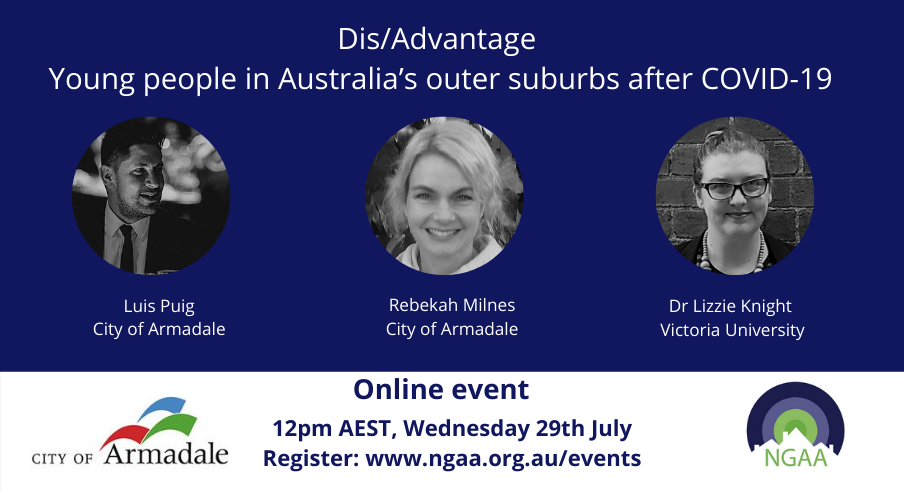News
On being young in the outer suburbs
Bronwen Clark, NGAA Executive Officer
I grew up in the outer suburbs of Melbourne. Back then (way back then), I lived in a brick veneer house in a new development. On the other side of the single lane road were paddocks and from a few blocks up you could see the city skyline across 35 kilometres of flat, vacant land.
I didn’t understand the concept of visibility, or line of sight, back then. I didn’t understand why I had no concept of career or work other than teaching, administration or retail; why I literally had no idea what people did in those skyscrapers in the city.
I was lucky enough to get a place at university, helped along by a program designed to include kids like me – from the wrong side of the tracks, from the ‘vast wastelands of urban sprawl’ (a term used by some highly educated people to this very day).
Back then I was playing out a common scenario, as the two hour public transport commute each way to university started out as an exciting adventure for a 17 year old, but became a near-impossibility for a 20 year old with two part-time jobs. I only just scraped through my final year of study.
Some things have changed over the years. The road outside the house where my parents still live is now six lanes wide. The 35 kilometres to Melbourne is now completely filled by houses, shopping centres, medical centres, schools, arterial roads - and people.
Some things haven’t changed though.
Many young people from the outer suburbs still do not have a clear line of sight – connection – to tertiary study or career pathways. Entry to university (particularly a sandstone) is still impeded by the impact of attending an overcrowded and underfunded high school; by the commute that is not only burdensome but these days can also be dangerous (think walk-tram-train-bus-walk after an evening lecture). Youth unemployment and disengagement remains higher than the national average – and will continue to grow post-COVID, echoing the impact of the ‘recession we had to have’.
The data backs up the lived experience.
Children growing up in homes the outer suburbs today are more likely to have parents without a qualification and are much less likely to have one or more parents with a bachelor or higher degree. Their parents are also less likely to work in occupations as managers or professionals. They are more likely to work in personal service or administration, as operators and labourers.
New developments with thousands of houses are still being constructed with no public transport connections – a further 10 or 15 kilometres out from where my family settled in their new house in the 1980s. TAFE and University campuses are still either non-existent or at risk due to lack of policy direction and funding, compounded by COVID-19.
There are around 1.7 million people under the age of 25 living in Australia’s outer suburbs today. What will their future hold? What type of education and career opportunities will they get, will they miss out on, will they never even realise existed?
***
Join us in a public webinar about young people in the outer suburbs after COVID-19 - more here.

More News
Game-Changer for Outer Suburbs: NGAA Celebrates Suburban University Study Hubs Announcement
28 . 11 . 2024 Read morePopulation Boom & Gloom: Infrastructure Funding Fails Fastest Growing Communities
22 . 11 . 2024Announcement from NGAA Chair Cr Deeth
26 . 09 . 2024Announcement from NGAA Chair Cr Deeth, Deputy Mayor Wollondilly Shire Council.
Read moreThe Case for a Unified Urban Policy: Insights from Bronwen Clark at UDIA WA
04 . 09 . 2024Recently our CEO, Bronwen Clark, was invited to speak at the Urban Development Institute of Australia Western Australia (UDIA WA) event in Perth. Themed A Shared Vision for Urban Growth in our Cities: Understanding the Draft National Urban Policy and What It Means for Perth, this event brought together 200 WA town planners and developers from the private and public sectors.
Read more
